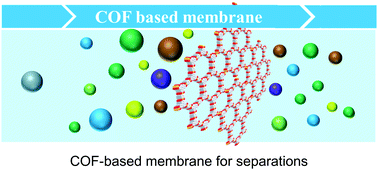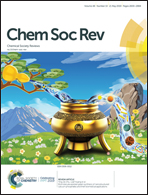Covalent organic frameworks for membrane separation
Abstract
Covalent organic frameworks (COFs), which are constructed from organic linkers, are a new class of crystalline porous materials comprising periodically extended and covalently bound network structures. The intrinsic structures and the tailorable organic linkers endow COFs with a low density, large surface area, tunable pore size and structure, and facilely-tailored functionality, attracting increasing interests in different fields including membrane separations. Exciting research activities ranging from fabrication strategies to separation applications of COF-based membranes have appeared. This review analyzes the synthesis and applications of diverse continuous/discontinuous COF membranes, such as COF-based mixed matrix membranes (MMMs), COF-based thin film nanocomposite (TFN) membranes, and free-standing COF films. Special attention was given to pore size, stability, hydrophilicity/hydrophobicity and surface charge of COFs in view of determining proper COFs for membrane fabrication, along with the approaches to fabricate COF-based membranes, such as blending, in situ growth, layer-by-layer stacking and interfacial polymerization (IP). Moreover, applications of COF-based membranes in gas separation, water treatment (deaslination and dye removal), organic solvent nanofiltration (OSN), pervaporation and fuel cell are disscussed. Finally, we illustrate the advantages and disadvantages of COF-based membranes through a comparison with MOF-based membranes, and the remaining challenges and future opportunities in this field.



 Please wait while we load your content...
Please wait while we load your content...